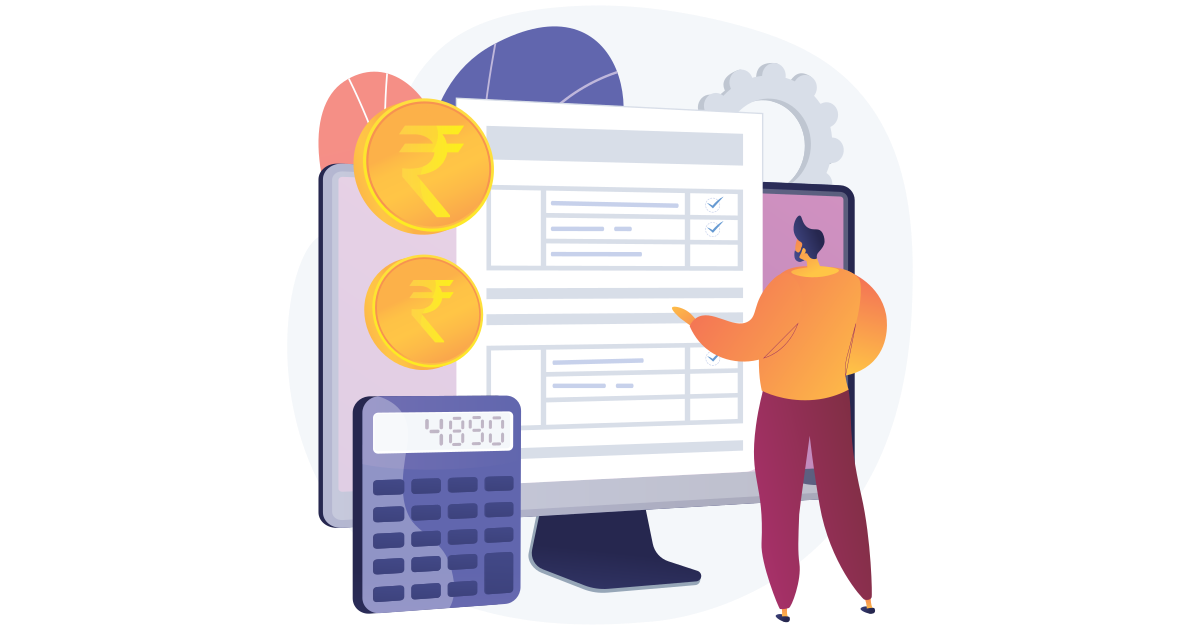

Did You Know?
We serve loans, the best way you can borrow

We serve loans, the best way you can borrow

When it comes to availing a loan, personal loans are considered one of the most common sources of financing. Most of the lenders, such as private or banks consider them as a stable source of credit that can be used for different purposes, such as personal or business purposes. However, because personal loans have so many characteristics that make them ideal for certain situations, they’re also referred to as auto-loan products. Are you wondering how to manage expenses with a personal loan? Do not worry; this article will explain more about what you need to know.
It is a type of loan given to an individual for personal use and can be used for making high-value purchases. These types of loans are unsecured and don't require collateral to secure the loan.
To avail a personal loan the lender will check your credit score and income to determine if you are eligible for a loan or not. Interest rates and monthly payment amounts are big factors in this. Personal loans can be a good option for borrowing money, but it's important to understand the terms of the loan and make sure you can afford the monthly payments before you take one out.
Personal loans can be a great way to manage expenses, especially if you have a lot of expenses you need to pay off all at once. Personal loans can help you cover some unexpected expenses. A personal loan comes in handy in many ways.
One of the main reasons to opt for a personal loan is for consolidation purposes. You can use this loan to consolidate other debts you may have. If you have a lot of debt from different sources, keeping track of everything and making all your payments on time can take time and effort.
Another good reason why you have to consider getting a personal loan is that it can help you pay those debts at higher rates. A personal loan can help you pay it off more quickly if you have credit card debt or other debt with high-interest rates. The lower interest rate on a personal loan can save you money in the long run and help you get out of debt.
Because personal loans come with a high upfront cost, shopping around for a pre- approved loan is a good idea. When you pre-buy a personal loan, you’ll be given information about the loan amount, interest rate, repayment plan, monthly payments, and other information.
This information will help you decide which loan to apply for. If you choose a pre- approved loan, you’ll be given information about the loan amount, interest rate, repayment plan, monthly payments, and other information. This information will help you decide which loan to apply for.
If you make a dropship purchase, make it a short-term loan. This will help you save money and put your foot in the door of long-term financing. If you’re planning to avail a personal loan for a shorter time period, then make sure it's good for you. Ensure you understand the repayment timeline, pay-off dates, and interest rates of various options. If you make a dropship purchase, make it a short-term loan. This will help you save money and put your foot in the door of long-term financing.
If you’re only going to use the loan for a short time, you need to make sure it’s a good fit for you. Ensure you understand the repayment timeline, pay-off dates, and interest rates of various options. This will help you avoid paying interest or pay off your loan quickly.
Choosing a loan is dependent on whether you want a fixed-interest loan, a hybrid loan, or a flexi-EMI loan. A fixed-interest loan pays you a fixed amount over time, while a flexi-EMI loan pays you for different periods. Other lenders allow their borrowers to choose between varying and fixed interest rates. When paying high-interest loans like credit cards, a fixed interest rate is used. A variable interest rate is often linked to inflation, so it can be difficult to maintain at a fixed interest rate.
To make sure you can afford your monthly loan payments, it's important to create a budget and stick to it. This involves tracking expenses and incomes to ensure that you can only spend what you can afford.
If you want to make less than a millionaire’s tax (MTF) on your loan payments or make regular payments under a low-interest rate, you can negotiate a lower interest rate with your lender. Some lenders will let you reduce the interest rate you’ll pay on a loan, usually by a few percentage points. You can negotiate this lower rate with your lender via phone, in person, or email. Be sure to let your lender know what rates you’d like to pay and what percentage values you’d like to have for your loan amount.
If you have a high-interest loan and want to borrow a little more to pay it off, you can borrow against your credit. This will raise your monthly payment and reduce your monthly contribution to your credit union. When you borrow against your credit, you’ll pay interest on the amount borrowed and make a small monthly contribution to your credit union. The amount you can borrow against your credit can be higher than the amount you can pay back, depending on your credit score and the interest rate you want to borrow.
If you have a high-interest loan and want to borrow a little more to pay it off, you can borrow against your credit. This will raise your monthly payment and reduce your monthly contribution to your credit union. When you borrow against your credit, you’ll pay interest on the amount borrowed and make a small monthly contribution to your credit union. The amount you can borrow against your credit can be higher than the amount you can pay back, depending on your credit score and the interest rate you want to borrow.
Borrowers should compare loan offers from various lenders before making a decision to ensure that they get the best rate of interest. There are a few things to keep in mind when you are shopping for a personal loan:
Check your credit score: Your credit score will affect the interest rate offered on a personal loan. With a great credit rating, there is a high chance that you will get a lower interest rate on personal loans.
Compare interest rates and fees: Be sure to compare the annual percentage rate (APR) and any fees charged by the lender. The APR includes the interest rate and fees, which is a good way to compare offers.
Consider the term of the loan: How long do you need to pay the loan? How much time is the lender offering you? With a longer repayment period, you will pay more over time.
Shop around: This is important as it will guide you to the best interest rates, terms, and lenders in the market. This is an important step that every borrower needs to take before taking a loan.
Consider using a financial advisor: If you're unsure how to manage your expenses with a personal loan, or if you want help creating a budget or shopping for the best rates and terms, consider working with a financial advisor. A financial advisor helps borrowers understand their options and guide them to making the best financial decisions for their financial situations.
Read the fine print: Be sure to read the terms and conditions of the loan before you agree to anything. This ensures you do not get any unhidden fees and charges down the way.
Monthly payments affordability: Does your income allow you to have monthly payments? This means looking at your income, expenses, and debt-to-income ratio to ensure you have enough money left each month to make your loan payments.
There are many kinds of loans, many reasons why people take loans, and many factors people need to consider during this period. A personal loan will pay you in full after you make the repayments, while a traditional loan payment will be late, late, and forgotten.
Ensure you have the money whenever it is time to repay your loan. There are numerous ways to get money, but one of the most common is a personal loan. You can purchase loans like this online or by phone. They can be flexible and adjustable, perfect for people who make hard-to-pay monthly payments. Also, don’t just rely on the Internet for information. Be sure to talk to a lender or certified loan guru who can help you understand different types of loans and help you navigate the process.
Download our personal loan app to apply for a personal loan. Get up to 2Lakhs* as a personal loan. Download Now!
Sign into avail a personal loan up to ₹ 2,50,000
Register to avail an instant loan in just a few minutes. Fulfil your financial needs with our loan and repay in easy EMIs.
Apply NowUnifinz Capital India Limited is a Non Banking Finance Company (NBFC) registered with the Reserve Bank of India (RBI). lendingplate is the brand name under which the company conducts its lending operations and specialises in meeting customer’s instant financial needs.
Corporate Identity No. (CIN)
L 1 7 1 1 1 D L 1 9 8 2 P L C 0 1 3 7 9 0
RBI Certificate of Registration No (CoR):
1 4 . 0 0 2 3 3
Registered Office :
Rajlok Building (Floor-5), 24 Nehru Place, New Delhi-110 019